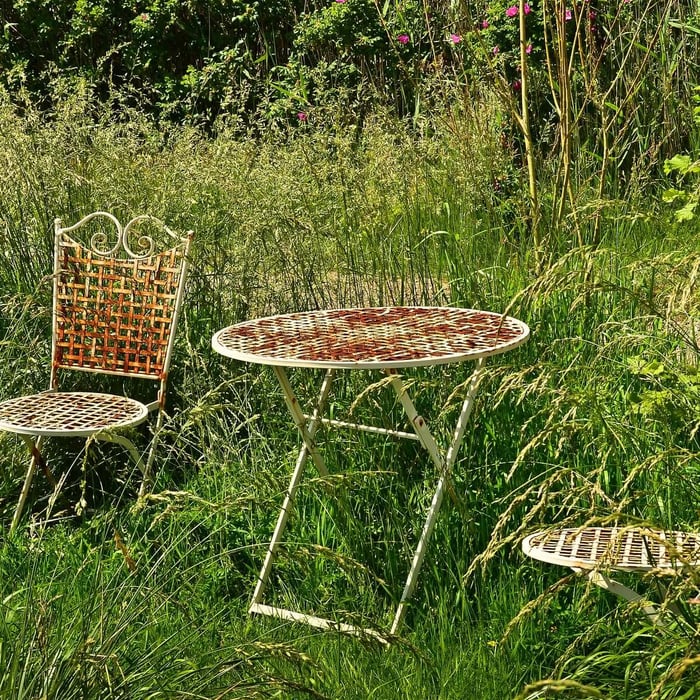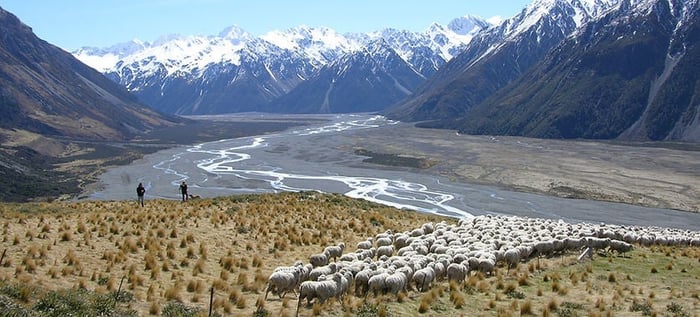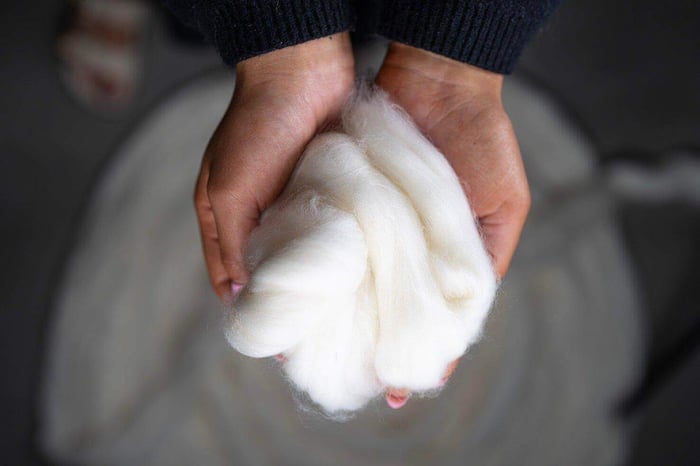Table of Contents
- Why Regenerative Brands Like Christy Dawn and Antipodean Home Are Redefining Eco-Luxury
- A New Standard of Eco-Luxury: Restoration at the Center
- 🌿 What Sets Regenerative Brands Apart
- 🌿 Summary: Why Regenerative Brands Are Redefining Eco-Luxury
- FAQs on Wool Duvet Inserts, Comforters & Sustainable Bedding
Why Regenerative Brands Like Christy Dawn and Antipodean Home Are Redefining Eco-Luxury
From the fields of New Zealand to the highlands of Peru, regenerative brands are rewriting the story of eco-luxury — quietly, beautifully, and from the ground up. The new standard isn’t just sustainable; it’s regenerative. It’s about leaving the earth better than we found it — restoring soil, nurturing animals, and supporting the people behind what we wear and sleep in.
Two regenerative brands leading this movement are Christy Dawn and Antipodean Home. From farm-to-closet fashion to soil-to-sleep bedding, they’re redefining what it means to live beautifully and responsibly.
From “less harm” to “more good”
Sustainability asks, How can we do less damage?
Regeneration asks, How can we heal what’s already been harmed?
That difference matters. Regenerative brands rebuild ecosystems — capturing carbon, restoring soil, and rebalancing our connection with the natural world. Every piece, every thread, becomes part of that healing process.
What is regenerative farming — and why it feels different
Regenerative farming is more than sustainable — it’s restorative. Instead of forcing the land with synthetic fertilizers, pesticides, or quick chemical fixes, it works with nature’s rhythms. The goal isn’t just to produce — it’s to replenish.
Instead of relying on synthetic fertilizers or pesticides, it works with nature’s own systems to rebuild what’s been lost: soil health, biodiversity, and balance.
Farmers use time-honoured practices like crop rotation, composting, and rotational grazing to let the land rest and recover. Sheep graze and move on, allowing native grasses to regrow. Rain sinks into rich, carbon-holding soil alive with microbes and worms. Birds return. Streams run clearer. The land begins to breathe again.
The result is soil that’s alive again — rich with microbes, holding more water, drawing carbon back from the atmosphere. Birds return, grasses thicken, and ecosystems begin to heal themselves.
But regeneration isn’t just a farming method — it’s a philosophy of connection. When we buy from regenerative brands, we become part of that cycle: honoring the land, the hands that care for it, and the rhythm of nature that sustains us all. It’s a quiet reminder that luxury doesn’t have to cost the earth — it can help restore it.
It’s a quiet, hopeful cycle — one that heals the soil and, in turn, reconnects us to it. When you choose products made from regenerative farms, you’re not just supporting better materials. You’re joining a movement to live closer to the natural systems that sustain us — the same systems that have shaped Aotearoa’s rolling hills and open skies for generations.
 A quiet moment in the wild: this kind of nature-immersed setting captures the spirit of regenerative brands — restoring what’s been depleted and living with the land, not against it.
A quiet moment in the wild: this kind of nature-immersed setting captures the spirit of regenerative brands — restoring what’s been depleted and living with the land, not against it.Christy Dawn: Farm-to-closet renewal
In the highlands of Peru, Christy Dawn’s Regenerative Alpaca Collection begins with animals grazing on restored native grasslands. Their gentle rotation helps the land recover, encouraging richer soil and thriving plant life.
From there, the story continues through human hands — fibers spun, knit, and finished by local artisans who are paid fair wages and treated as partners, not suppliers. The result is a garment that feels impossibly soft and deeply intentional: the kind of beauty that honors its source.
When you wear regenerative fashion, you’re not just choosing style — you’re wearing reciprocity.
Antipodean Home: Sleep that restores the earth
Across the Pacific, Antipodean Home brings the same regenerative philosophy into your home. Every wool comforter and organic sheet set begins on low-impact farms across Aotearoa New Zealand.
Their ZQ-certified regenerative wool comes from farms that capture carbon and restore biodiversity. Their organic regenerative cotton is grown without chemicals on farms that rebuild soil health. Together, they create bedding that’s naturally breathable, hypoallergenic, and temperature-balancing — luxury comfort that feels as good as it is good.
Each night’s rest becomes an act of restoration.
Organic Wool Comforter | Made in New Zealand, Breathable All-Season Comfort

$342.00
$380.00
Sleep naturally better with our organic wool comforter Unlike down or synthetic comforters that trap heat, our spun wool design wicks away moisture and prevents overheating, so you stay cool & dry. Designed for deeper sleep with a gentle weight… Read more
Eco-luxury, redefined
Luxury used to mean excess — now it means connection. Connection to nature, to the artisans behind each product, and to a slower, more intentional way of living.
Regenerative brands like Christy Dawn and Antipodean Home prove that beauty and responsibility can coexist. Their work shows that comfort and conscience are not opposites — they’re partners in a richer, more meaningful kind of luxury.
Regenerative Organic Cotton Sheet Set – Soft, Breathable & Sustainable

$189.00
Softer Sheets. Cleaner Sleep. Our organic cotton sheet set are simply better for the earth, and for your sleep. Grown on low-impact regenerative farms that actively heal the soil, our cotton is then woven and finished responsibly. This process eliminates… Read more
A New Standard of Eco-Luxury: Restoration at the Center
Regenerative brands aren’t just offering better products — they’re offering a different way to live. A way that slows us down, roots us deeper, and invites us to choose quality over convenience. Whether it’s a dress grown from Peruvian highlands or a comforter born from Aotearoa’s rolling pastures, these pieces reconnect us to the source. They remind us that every beautiful thing begins with healthy land, cared for by people who understand its rhythm. And that’s the quiet power of regeneration — it makes us feel part of something bigger, steadier, and deeply human.
🌿 What Sets Regenerative Brands Apart
Regeneration is the future of eco-luxury — thoughtful, restorative, and rooted in the belief that the earth deserves more than “less harm.” Brands like Christy Dawn and Antipodean Home are showing that beauty grows from reciprocity: honoring the land, uplifting communities, and crafting pieces meant to last. When we choose regenerative, we choose a world where comfort and conscience move together — where every purchase leaves the soil, the animals, and the people better than before.
🌿 Summary: Why Regenerative Brands Are Redefining Eco-Luxury
They restore ecosystems, rebuilding soil health, biodiversity, and carbon-rich landscapes.
They elevate craftsmanship, treating farmers and artisans as partners, not suppliers.
They replace extraction with reciprocity, giving more back to the land than they take.
They create products that feel naturally luxurious, without chemicals, synthetics, or shortcuts.
They prove that true luxury is regenerative, connecting comfort, ethics, and ecological renewal.
They build a better future, one garment, one comforter, one field, one farm at a time.
Join the regenerative movement
When you choose regenerative, you choose restoration over extraction. Every sweater, every comforter, every choice helps heal what sustains us all.
Because true eco-luxury isn’t about having more.
It’s about giving back.
Explore Our Regenerative Collection
FAQs on Wool Duvet Inserts, Comforters & Sustainable Bedding
What makes regenerative brands different from sustainable brands?
While sustainable brands aim to minimize harm, regenerative brands go further — they restore what’s been depleted. Instead of maintaining the status quo, they rebuild soil, support biodiversity, and strengthen local communities. It’s not about doing less harm; it’s about doing more good.
How does regenerative farming work?
Regenerative farming uses natural systems — not synthetics — to rebuild the land. Farmers rotate crops, compost, and let animals graze in cycles that allow pastures to recover. This approach improves soil health, draws carbon back from the atmosphere, and creates ecosystems that thrive naturally.
Why are Christy Dawn and Antipodean Home considered regenerative brands?
Both brands trace their materials back to regenerative farms. Christy Dawn sources alpaca and cotton grown in harmony with the land, while Antipodean Home uses New Zealand regenerative wool and organic cotton to craft bedding that restores soil and supports low-impact farmers.
How can I support the regenerative movement?
Choose products made from regenerative materials — from farm-to-closet clothing to soil-to-sleep bedding. Each purchase helps fund farmers who heal the land and brands that prove comfort and conscience can coexist.




